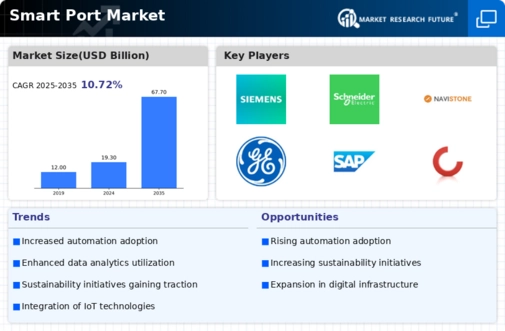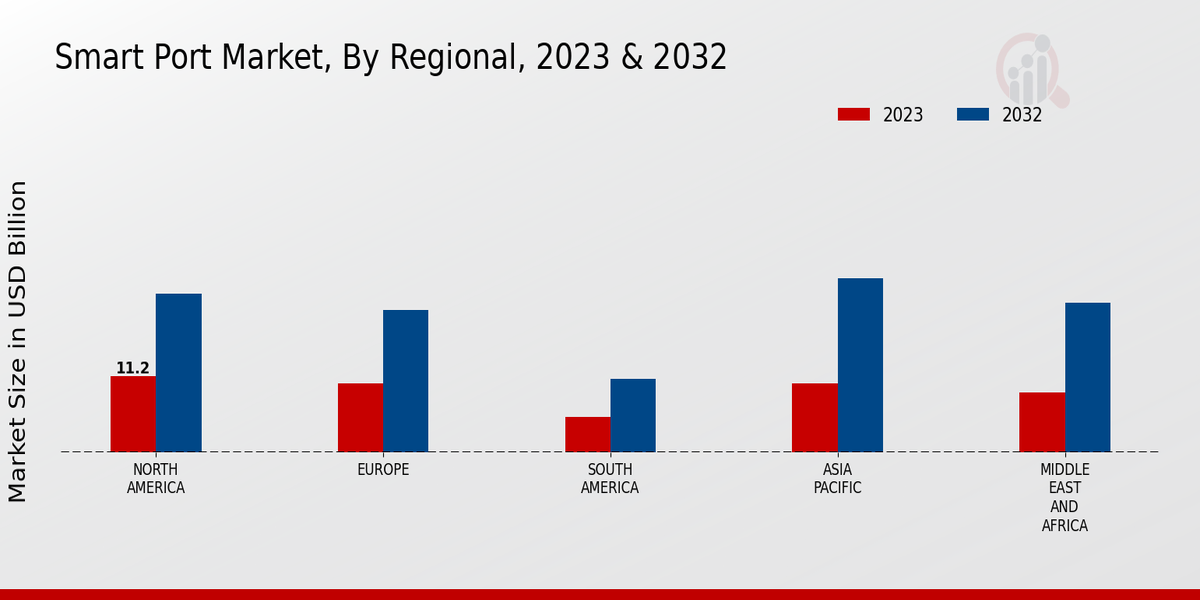Government Investments
Government investments play a crucial role in the Global Smart Port Market Industry, as many nations recognize the strategic importance of modernizing port infrastructure. Initiatives to enhance port facilities and integrate smart technologies are being funded by various governments. For example, the European Union has allocated substantial resources to improve port efficiency and sustainability. These investments not only facilitate the adoption of advanced technologies but also stimulate economic growth in the region. As a result, the market is likely to experience robust growth, with a projected value of 19.3 USD Billion in 2024.
Increased Trade Volume
The Global Smart Port Market Industry is poised for growth due to the increasing trade volume across global supply chains. As international trade expands, ports are under pressure to enhance their capacity and efficiency. For instance, the expansion of the Panama Canal has led to increased shipping traffic, necessitating smarter port solutions to manage the influx. This trend suggests that ports must adopt smart technologies to handle larger volumes of cargo efficiently. Consequently, the market is expected to grow significantly, with projections indicating a potential value of 67.7 USD Billion by 2035.
Sustainability Initiatives
Sustainability initiatives are becoming increasingly pivotal within the Global Smart Port Market Industry. Ports are adopting green technologies to minimize their environmental impact, such as using renewable energy sources and implementing waste management systems. For example, the Port of Rotterdam has invested in sustainable energy solutions, which have significantly reduced carbon emissions. This focus on sustainability not only aligns with global environmental goals but also attracts investments, as stakeholders prioritize eco-friendly operations. The market's growth trajectory indicates that by 2035, it could reach 67.7 USD Billion, driven by these sustainability efforts.
Technological Advancements
The Global Smart Port Market Industry is experiencing rapid technological advancements that enhance operational efficiency and reduce costs. Innovations such as the Internet of Things (IoT), artificial intelligence, and blockchain are being integrated into port operations. For instance, automated cranes and smart sensors are optimizing cargo handling, leading to reduced turnaround times. As a result, the market is projected to reach 19.3 USD Billion in 2024, reflecting the growing adoption of these technologies. Furthermore, these advancements are expected to drive the market's growth, with a compound annual growth rate (CAGR) of 12.11% anticipated from 2025 to 2035.
Global Supply Chain Resilience
The Global Smart Port Market Industry is increasingly influenced by the need for resilience in global supply chains. Disruptions in supply chains have highlighted the importance of efficient port operations. Ports are now focusing on smart solutions that enhance their adaptability to changing market conditions. For instance, the implementation of predictive analytics allows ports to anticipate and respond to disruptions more effectively. This shift towards resilience is expected to drive market growth, with projections indicating a CAGR of 12.11% from 2025 to 2035, ultimately leading to a market value of 67.7 USD Billion by 2035.






















Leave a Comment